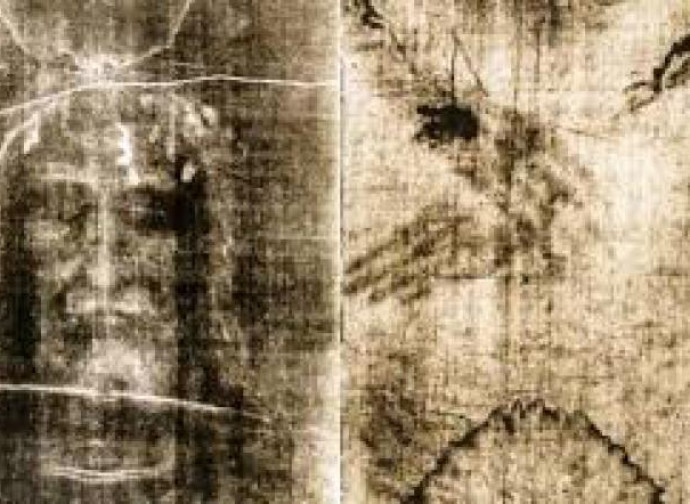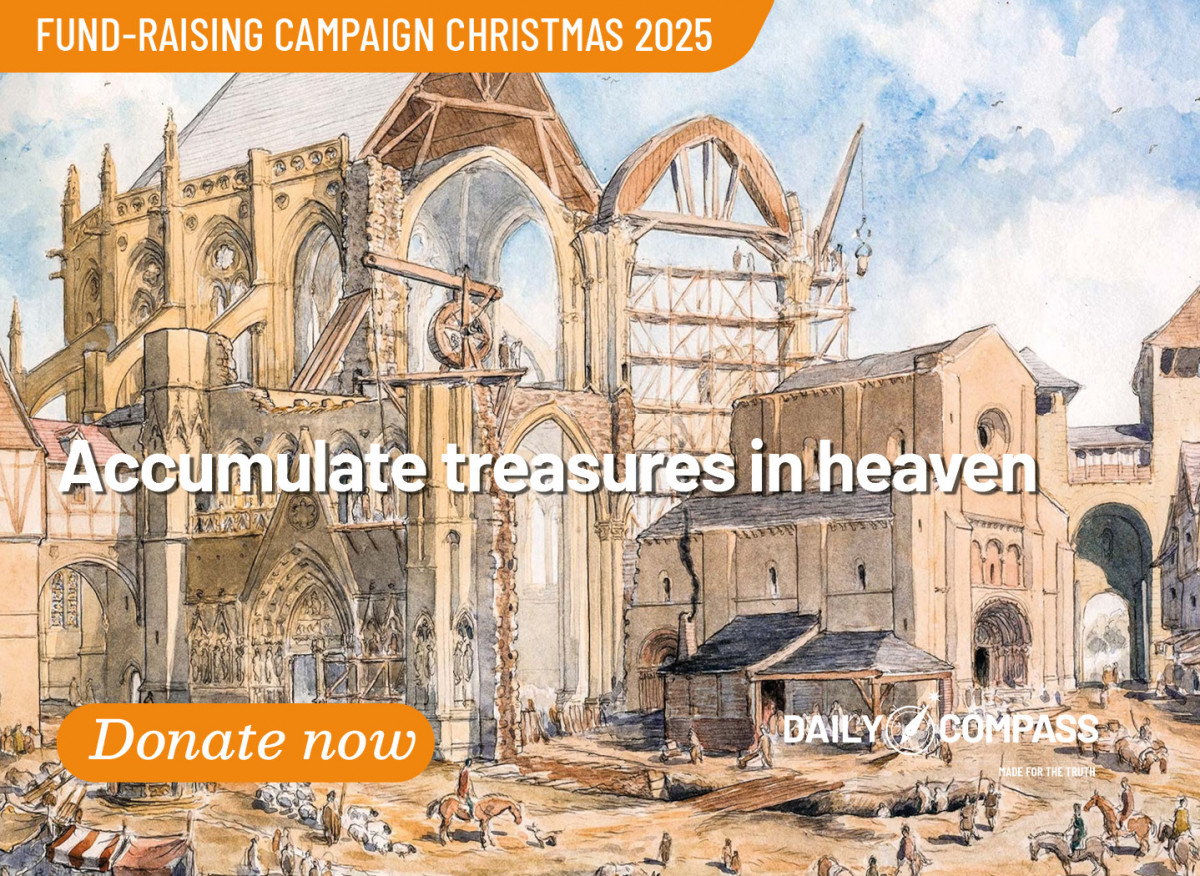Everything about the Shroud speaks of Jesus of Nazareth
The Shroud speaks eloquently of events that took place two thousand years ago. Yet falsehoods continue to be perpetuated to deny its authenticity. This is despite more than a hundred years of research and publications confirming the link between the Shroud and the Passion, Death and Resurrection of Jesus.

The approach of Easter brings the Shroud, the venerated relic kept in Turin for more than four centuries, back into the limelight. John Paul II described it as follows: A unique witness to Easter, to the Passion, Death and Resurrection. A silent witness, but at the same time surprisingly eloquent. Indeed, the Shroud speaks, as Benedict XVI said: "This face, these hands and feet, this side, this whole body speaks, it is itself a word that we can listen to in silence.
In recent days there has been a proliferation of conferences, exhibitions, books and articles on the Shroud. A major exhibition, organised by the Pontifical Athenaeum Regina Apostolorum, is currently being held in the Basilica of St John the Baptist of the Florentines in Rome. Throughout Italy and in some foreign countries there is the Ostensione diffusa, an initiative to display copies of the Shroud in churches. Contemplare la Sindone, the new book I wrote with Don Domenico Repice (Ares 2025), has just been published.
In this ferment of initiatives, however, we also hear something that leaves us very perplexed. The most sensational statement I have heard concerns the reaction of the scientific world to the medieval dating of the Shroud in 1988: "Everything was silent for 22 years, until the ENEA Congress in 2010, where Marco Riani spoke". This is not true, because a chorus of protest immediately arose on scientific grounds. Numerous congresses were held: Bologna 1989, Paris 1989, Cagliari 1990, Rome 1993, Nice 1997, Turin 1998, Richmond 1999, Rio de Janeiro 1999, Orvieto 2000, Dallas 2001, Paris 2002, Rio de Janeiro 2002, Dallas 2005. In all of them, works were presented that refuted the radiocarbon test.
In 1990, the first book challenging the medieval dating was published: La Sindone, un enigma alla prova della scienza (The Shroud, an enigma proven by science), which I wrote with Orazio Petrosillo for Rizzoli, with a preface by Vittorio Messori. Other books followed and, above all, scientific articles in prestigious peer-reviewed journals, such as that of H. Gove et al. in 1997: A problematic source of organic contamination of linen, or that of R. Rogers in 2005: Studies on the radiocarbon sample from the Turin Shroud, to name but two.
Furthermore, those who claim that everything was silent before 2010 never mention the definitive refutation of radiocarbon dating published in Archaeometry in 2019 by T. Casabianca, E. Marinelli, B. Torrisi and G. Pernagallo. They avoid talking about it in order to make people believe that everything was quiet after that.
The colossal lie that "everything is quiet" regarding radiocarbon dating goes hand in hand with another lie: "We know almost nothing about the Shroud; there is more that we don't know than what we do know. We know what it isn't, but we don't know what it is. This casually denies everything that has been found and published in over a hundred years of research: the manufacture of the fabric, which is very valuable and contains traces of DNA from people in India, supporting the possibility that Joseph of Arimathea bought it in the Temple; conspicuous traces of Middle Eastern DNA; the presence of aloe and myrrh and an abundance of pollen from plants in the Holy Land; the presence of aragonite, similar to that found in the caves of Jerusalem; a side seam identical to those found on first-century Jewish fabrics.
The body in the shroud was that of a man scourged, crowned with thorns, crucified with nails and pierced in the side by a spear. All of this is consistent with the description of Christ's passion in the Gospels. The time of contact between the body and the shroud was estimated at 36-40 hours, after which the image of the body formed on the shroud. The shroud was exposed to orthogonal radiation, which, according to laser experiments carried out at ENEA in Frascati, can be explained by a strong emission of light.
Some people are trying to discredit the analyses carried out by Pierluigi Baima Bollone, former director of the Institute of Forensic Medicine in Turin, who proved that the blood was human and of group AB, the same as that found on the Shroud of Oviedo and in some Eucharistic miracles. The reagents used were allegedly inadequate and the blood could have been that of a rabbit. These attacks are unjustified, since Baima Bollone had already responded to the objections in the 1980s, when the analyses were carried out, in the magazine Sindon, the same publication that had published his work. The fanatical deniers even went so far as to deny that Jesus perspired in Gethsemane, a phenomenon known in medicine in cases of great exertion, with arguments such as that Luke was not present or that perspiration cannot be seen in the uncertain light of torches.
In the end, the crowd of detractors says that whether the Shroud is real or fake does not change anything, because what matters is the image it conveys of Jesus. They do not realise that if it were not the Shroud of Jesus, it would be the result of a terrible crime committed to create a false relic, and therefore not a reference to Jesus in an icon made for meditation. However, they said that "there are more beautiful icons" than the shroud.
Another ambiguous statement, intended to be poetic, is this: The Shroud does not give answers, it asks questions. Can it be proof of the Resurrection? The answer to a question of faith is not to be found in the Shroud, but in the eyes and hearts of those who look at it. Those who say this do not take into account all the results of scientific tests which, as already mentioned, have provided many answers to our questions. The physicists who carried out the laser experiments at ENEA have admitted that their results suggest that the image was formed by light similar to that which Jesus radiated during the Transfiguration. The answer, therefore, lies not in the eyes and hearts of those who simply look at the Shroud without knowing anything and who may draw false conclusions, but in the minds of those who have documented themselves and who know the answers the Shroud has given to scientists.
The discomfort with the authenticity of the Shroud, defined by some as an "obsession", goes so far as to claim that if it were authentic and a sign of the Resurrection, it would be detrimental to faith, which would be destroyed by an imposing truth. Fortunately, the custodian of the Shroud, Cardinal Roberto Repole, Archbishop of Turin, simply said: 'The Shroud is also the imprint of the Resurrection, which tells us that God can intervene'. With gratitude to Cardinal Repole, we approach the joy of Holy Easter, the proclamation of the empty Shroud and of the Risen Christ!




